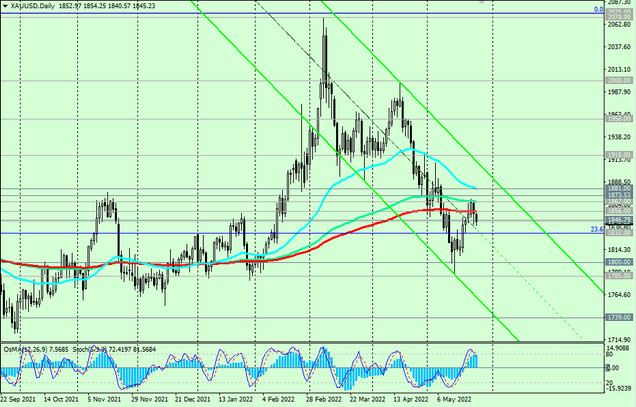As a result of the meeting, which ended on May 4, Fed leaders decided to raise interest rates by 0.50% and announced the beginning of a reduction in the Fed's balance of assets of $9 trillion in June. "Inflation is too high, and we understand the difficulties it causes. We are taking swift action to bring it down," Fed Chairman Jerome Powell said at a press conference following the meeting, adding that "the Open Market Committee generally leans towards considering further interest rate hikes of 50 basis points over the next few meetings.”
The US central bank typically raises rates by 0.25% at a time, and the last half percentage point hike was in 2000. Now the Fed is pursuing the most aggressive tightening of monetary policy in decades, rapidly winding down stimulus measures that have fueled inflationary pressures. The actions of the central bank are aimed primarily at fighting inflation, which has reached a maximum in four decades. "The committee is very carefully assessing inflationary risks," the central bank said.
Shrinking the balance sheet is another way to wind down stimulus measures and drive up borrowing costs. According to the Fed's plan, the amount of government bonds and mortgage bonds held by the central bank should decrease monthly by $30 and $17.5 billion, respectively, in June, July and August. After that, the rate of reduction will accelerate to $60 and $35 billion, respectively.
And so, the minutes of the Fed meeting, published on Wednesday, indicated the confidence of the central bank's leaders in the economic recovery. In addition, "the focus was on raising interest rates to neutral as soon as possible."
The leaders of the Federal Reserve System consider it necessary to raise the key rate by half a percentage point at each of the next two meetings.
Now the markets take into account in quotes that the Fed's key rate at the end of the year will be 2.75%. Although economists are wondering whether the Fed will really be able to curb high inflation without provoking a hard landing of the economy, they are counting on the strengthening of the dollar, referring to the factors supporting the dollar: expectations of an aggressive increase in Fed rates in the coming months, attractive yields on U.S. government bonds, a fairly good state of the U.S. economy, including in relation to other major the economies of the world, and the labor market.
At the time of publication of this article, futures for the DXY dollar index are traded near 102.08, 298 points below the local maximum (since January 2003) of 105.06, reached in the first ten days of May. In general, despite the decline, the positive dynamics of the dollar and its DXY index remain, while the quotes of the traditional defensive asset, gold, are declining.
At the time of publication of this article, the XAU/USD pair is traded near the 1845.00 mark, below the important resistance levels 1873.00, 1867.00, 1856.00, showing a tendency to further decline. It appears that investors are more concerned about the Fed's monetary policy outlook than potential recession and geopolitical tensions.






